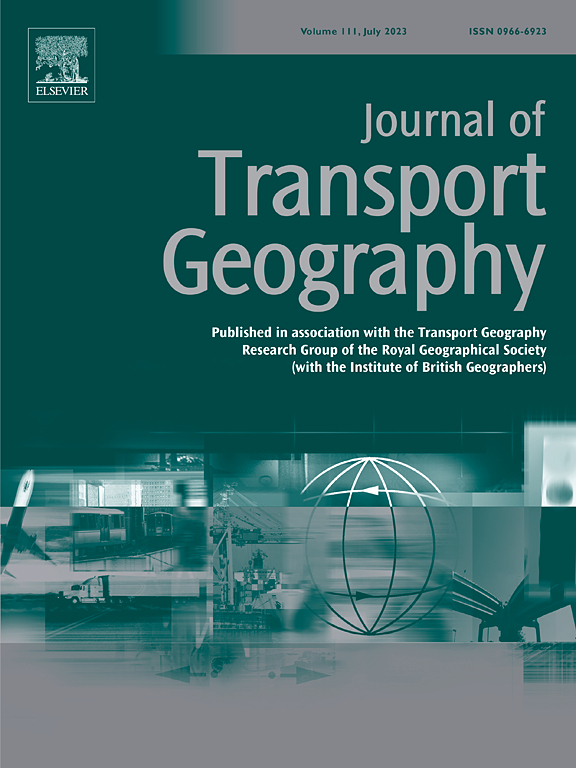Integrated transit service status assessment using smart transit card big data under the x-minute city framework
IF 5.7
2区 工程技术
Q1 ECONOMICS
引用次数: 0
Abstract
The x-minute city concept emphasizes the importance of residents being able to access locations of urban functions by active transportation modes within a short travel time. However, there are inevitably areas where active transportation modes like walking are insufficient to reach certain locations. In such cases, public transit plays a vital role in providing sustainable and healthy transportation options, especially for residents without cars. This research focuses on the integrated assessment of transit coverage status by combining accessibility and connectivity measures based on smart transit card big data within the x-minute city framework. Using smart transit card big data from Beijing, this study employs an enhanced two-step floating catchment area (E2SFCA) method to calculate the accessibility of transit points, such as bus stops and metro stations, within three common x-minute city travel time thresholds (i.e., 5, 10, and 15-min). The accessibility measures are weighted by passenger volume derived from the smart transit card big data. Additionally, transit connectivity is evaluated using a matrix-based approach based on the real-world multi-modal transit network. By integrating both transit accessibility and connectivity, a composite transit index is developed using a modified z-score framework to assess the transit service status of different areas in Beijing.
求助全文
约1分钟内获得全文
求助全文
来源期刊

Journal of Transport Geography
Multiple-
CiteScore
11.50
自引率
11.50%
发文量
197
期刊介绍:
A major resurgence has occurred in transport geography in the wake of political and policy changes, huge transport infrastructure projects and responses to urban traffic congestion. The Journal of Transport Geography provides a central focus for developments in this rapidly expanding sub-discipline.
 求助内容:
求助内容: 应助结果提醒方式:
应助结果提醒方式:


